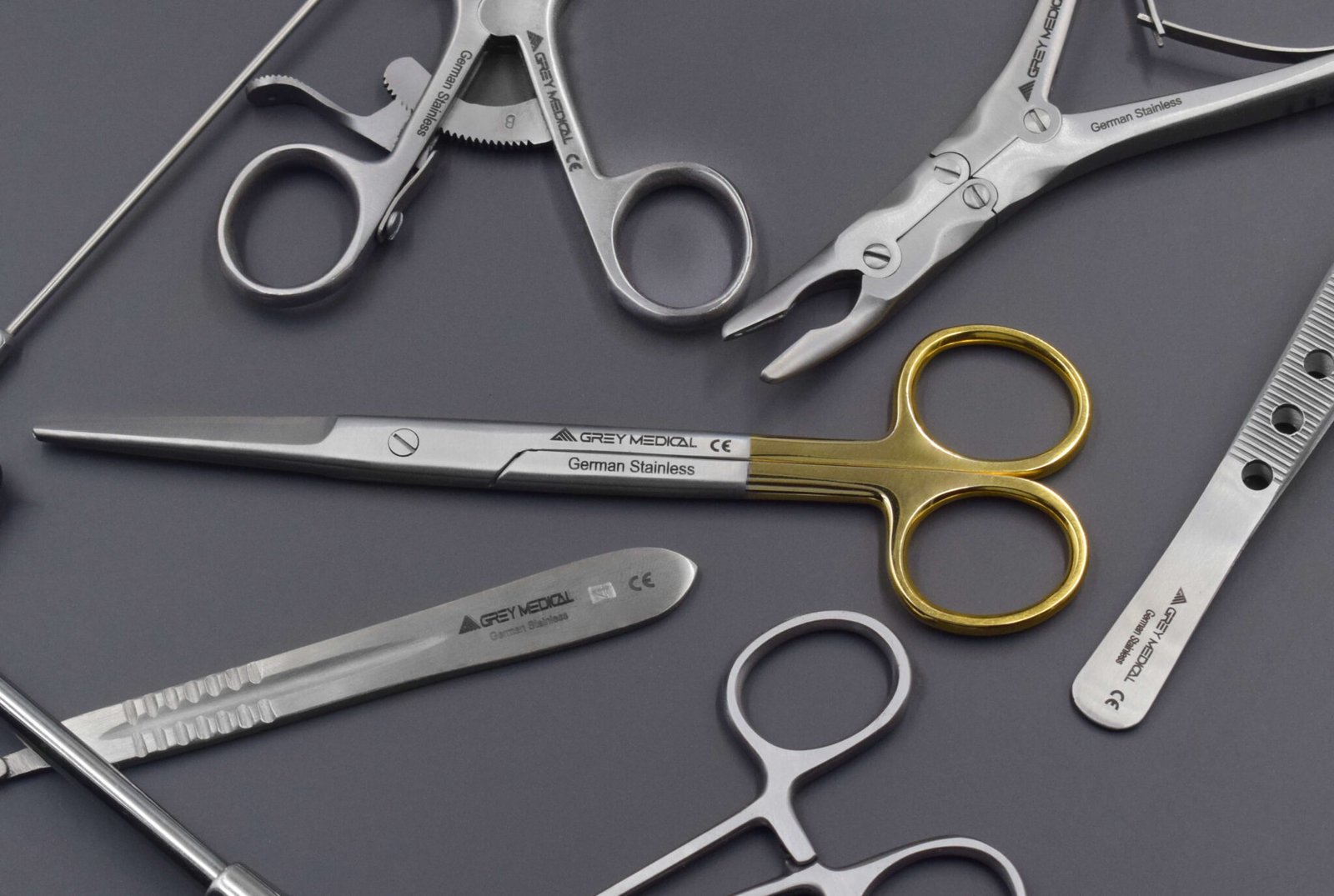Medical scissors are essential surgical instruments used by healthcare professionals for a variety of tasks, including cutting tissues, sutures, and bandages. Medical scissors are indispensable tools in healthcare, playing a critical role in various surgical and clinical procedures. Their specialized designs cater to specific functions, making them indispensable in operating rooms, clinics, and emergency settings.
The Importance of Medical Scissors
Medical scissors are designed to provide precision and control during surgical and clinical procedures. Their functionality can significantly impact the efficiency of surgeries and the safety of patients. Choosing the right type of scissors for a specific task can facilitate smoother operations and improve overall outcomes.
Key Features of Medical Scissors
- Material: Medical scissors are typically made from stainless steel, ensuring durability and resistance to corrosion.
- Design: The design of scissors can vary significantly, affecting their suitability for different applications.
- Ergonomics: Many medical scissors are designed with comfort in mind, allowing for prolonged use without causing fatigue.
Understanding the various types of medical scissors is crucial for both healthcare professionals and patients.
Common Types of Medical Scissors
Medical scissors can be classified into several categories based on their specific uses and designs. Here’s a closer look at the most common types:
a. Surgical Scissors
Surgical scissors are versatile instruments used in various surgical procedures. Their design allows for precise cutting of tissues and sutures.
-
Mayo Scissors: These heavy-duty scissors have straight or curved blades and are primarily used for cutting through tough tissues, such as fascia or muscle. Their robust design makes them ideal for larger incisions.
-
Metzenbaum Scissors: These scissors have long, slender blades, making them ideal for delicate cutting and dissection of softer tissues. They are often used in procedures requiring precision, such as gynecological or cardiac surgeries.
b. Dissecting Scissors
Dissecting scissors are specifically designed for separating tissues and layers during surgical procedures.
-
Blunt-Ended Scissors: These scissors feature blunt tips that minimize trauma to surrounding tissues. They are particularly useful in delicate dissections, allowing surgeons to navigate around vital structures without causing damage.
-
Tenotomy Scissors: Designed for cutting tendons and small tissues, tenotomy scissors have a unique shape that allows for precise dissection. They are commonly used in ophthalmic and orthopedic surgeries.
c. Suture Scissors
Suture scissors are specialized tools designed for cutting sutures and other materials used in wound closure.
-
Suture Removal Scissors: These scissors typically have a blunt tip and a notch in the blade to help slide under sutures without damaging the skin. They are essential for safely removing stitches post-surgery.
-
Littauer Suture Scissors: These scissors feature a unique design that allows for easy cutting of sutures while minimizing the risk of injury to the patient. They are often used in outpatient settings for suture removal.
d. Bandage Scissors
Bandage scissors are designed to cut through bandages, dressings, and clothing without causing injury to the patient.
-
Folding Scissors: These scissors are characterized by their curved, blunt-tip design that prevents accidental cuts to the skin. They are often used in emergency situations to quickly access wounds.
-
Kelly Scissors: With a design similar to standard bandage scissors, Kelly scissors are specifically made for cutting through heavier materials like gauze and tape, making them ideal for surgical dressings.
e. Trauma Scissors
Trauma scissors are robust instruments designed for emergency situations, allowing first responders to quickly and efficiently cut through clothing and bandages.
-
Emergency Trauma Scissors: These scissors have a serrated edge and a blunt tip, enabling them to cut through tough materials while ensuring patient safety. They are often used in pre-hospital settings to access injuries rapidly.
-
Molar Scissors: While less common, molar scissors are designed for cutting through bone or tougher tissues during trauma surgery, making them suitable for use in orthopedic procedures.
Choosing the Right Scissors for the Job
Selecting the appropriate type of medical scissors is crucial for achieving optimal outcomes in clinical practice. Here are some factors to consider:
a. Surgical Procedure
The specific type of surgery being performed dictates the type of scissors required. For instance, Mayo scissors are suitable for larger incisions, while Metzenbaum scissors are ideal for delicate dissection.
b. Tissue Type
Understanding the type of tissue being cut is essential. Different tissues require different cutting techniques and instruments, and using the wrong scissors can lead to complications.
c. Ergonomics
Comfort and ease of use are critical when selecting scissors, especially for prolonged procedures. Ergonomically designed scissors can reduce fatigue and improve precision during surgery.
d. Sterilization and Maintenance
Medical scissors must be properly sterilized and maintained to ensure their longevity and effectiveness. Choosing scissors that are easy to clean and maintain can enhance their usability in clinical settings.
Innovations in Medical Scissors
As medical technology continues to advance, innovations in medical scissors are emerging, improving their functionality and versatility.
a. Materials and Coatings
New materials and coatings are being developed to enhance the durability and corrosion resistance of medical scissors. Some scissors now feature non-stick coatings that prevent tissue from adhering to the blades, making cutting smoother.
b. Integrated Technologies
Some modern surgical scissors are now integrated with technologies such as lasers or electrosurgery, allowing for simultaneous cutting and coagulation, which can improve surgical efficiency and patient safety.
c. Customization
Customization options for medical scissors are becoming increasingly popular. Surgeons can choose specific blade lengths, shapes, and ergonomic features to suit their preferences and procedural needs.
Conclusion
Medical scissors are indispensable tools in healthcare, playing a critical role in various surgical and clinical procedures. Understanding the different types of medical scissors, their functions, and their applications is vital for healthcare professionals to enhance patient safety and surgical outcomes.
With advancements in technology and design, the future of medical scissors looks promising, offering innovations that can further improve their functionality and effectiveness. By selecting the appropriate scissors for specific tasks and maintaining their quality, healthcare professionals can ensure the best possible care for their patients.
